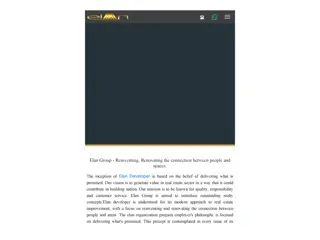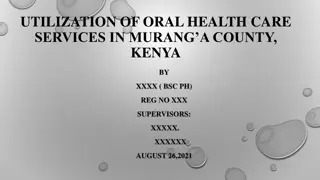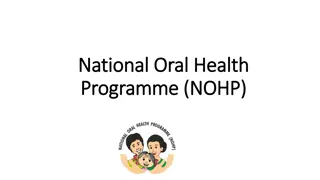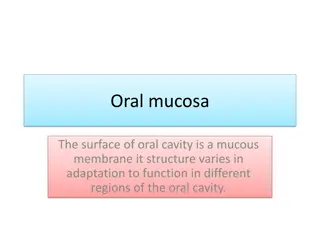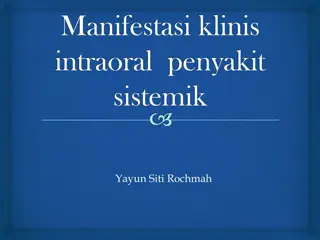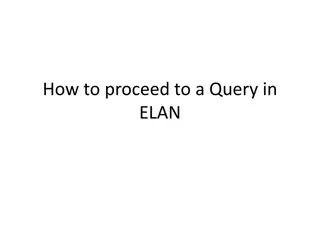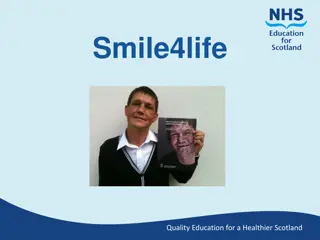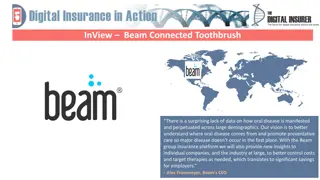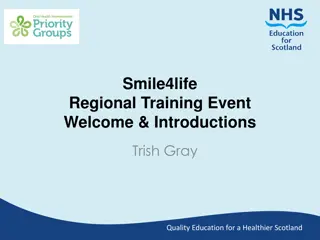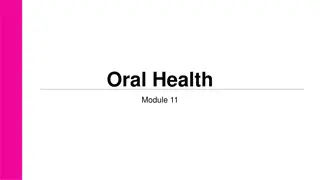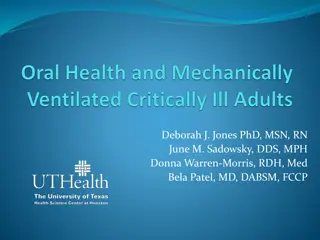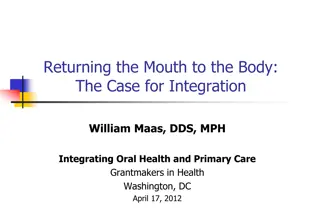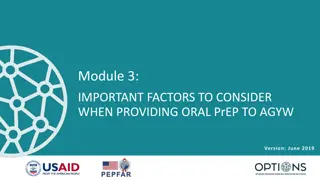ELAN as a Tool for Oral History Workshop Summary
ELAN, a tool developed over 15 years at the Max-Planck-Institute for Psycholinguistics, is utilized in various research contexts like language documentation, acquisition studies, gesture studies, and sign language studies. The workshop covers the introduction to ELAN, basic and advanced features, and the importance of oral history in research. It emphasizes manual annotation of audio and video recordings, hierarchical tier structure, and diverse input methods for annotation. ELAN facilitates detailed analysis and organization of linguistic data, making it a valuable tool in linguistic research.
Download Presentation

Please find below an Image/Link to download the presentation.
The content on the website is provided AS IS for your information and personal use only. It may not be sold, licensed, or shared on other websites without obtaining consent from the author.If you encounter any issues during the download, it is possible that the publisher has removed the file from their server.
You are allowed to download the files provided on this website for personal or commercial use, subject to the condition that they are used lawfully. All files are the property of their respective owners.
The content on the website is provided AS IS for your information and personal use only. It may not be sold, licensed, or shared on other websites without obtaining consent from the author.
E N D
Presentation Transcript
ELAN as a tool for oral history CLARIN Oral History Workshop Oxford Sebastian Drude CLARIN ERIC 18 April 2016
ELAN as a tool for oral history 1. Introducing the ELAN tool 2. Overview of basic features 3. Advanced features 4. Desiderata 5. Oral history CLARIN 2
1. Introducing the ELAN tool Around 15 years of development Developed at the Max-Planck-Institute for Psycholinguistics in Nijmegen and by partners Main developer Han Sloetjes (more than 10 years) Used in particular in the context of: - Language documentation (DOBES) - Language acquisition studies (MPI, CHILDES) - Gesture studies - Sign language studies CLARIN 3
1. Introducing the ELAN tool CLARIN 4
2. Overview of basic features Manual annotation of audio and video recordings Several video streams are possible (dialogues ) Unlimited tiers for annotating all kind of information ( linguistic types go beyond linguistics) Tiers can repeat for unlimited participants Hierarchy of tiers; tiers can inherit time marks Different input methods (support for various scripts) Multi-tier regular expression search Several in- and export formats, print CLARIN 5
2. Overview of basic features CLARIN 6
2. Overview of basic features CLARIN 7
2. Overview of basic features Tier Stereotypes none: segments can be freely set (root mother tier): e.g., transcription on sentence level symbolic association: segments have identical start- and endpoints as in the mother tier: e.g., translation on sentence level, glosses for individual word forms or morphs included in: segments can only be created within the boundaries of a segment on the mother tier: e.g., certain constituents of a sentence CLARIN 8
2. Overview of basic features Tier Stereotypes time subdivison: a segment on the mother tier is completely covered by one or several adjacent segments; inner boundaries can be freely set: e.g., individual word forms symbolic subdivison: a segment on the mother tier is completely covered by one or several adjacent segments; inner boundaries are not related to times: e.g., individual morphs within word forms CLARIN 9
2. Overview of basic features Twin-tool ANNEX (online visualization tool) CLARIN 10
3. Advanced features Additional modes: Segmentation mode, transcription mode Interaction with online services: Alignment of Transcriptions and Audio (MAUS) Automatized recognition of speech vs. silence, speaker differentiation Automatized recognition of moving hands & heads ELAN Annotation Format in workflow tools CLARIN 11
4. Desiderata Flexibility creates a need for standards: Which type of information is in a tier? (tier naming) How is the information encoded? (conventions, abbreviations) Independent of ELAN: Automatized transcription (speech recognition) Applying NLP-tools to (originally) oral data (named entity recognition, topic extraction ) CLARIN 12
5. Oral history Useful for manual annotation: transcription, notes, tags Using advanced features, automatization (e.g. alignment of existing transcripts) What kinds of annotation are typically needed? Template for specific needs for O.H.? Are there technical opportunities to improve ELAN for O.H.? Specific metadata for O.H.? CLARIN 13
ELAN as a tool for oral history CLARIN Oral History Workshop Oxford Sebastian Drude CLARIN ERIC 18 April 2016



